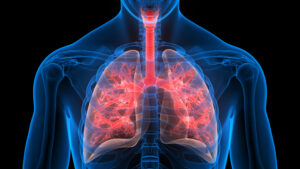 Hospitals across the country pushed the pause button on elective surgeries and non-emergency procedures during the early days of the COVID-19 pandemic. However, patients requiring lifesaving organ transplants couldn’t wait. To meet these patients’ urgent needs, the transplant team at the Brigham and Women’s Hospital Lung Center sprang into action, quickly creating new protocols to help the sickest of the sick.
Hospitals across the country pushed the pause button on elective surgeries and non-emergency procedures during the early days of the COVID-19 pandemic. However, patients requiring lifesaving organ transplants couldn’t wait. To meet these patients’ urgent needs, the transplant team at the Brigham and Women’s Hospital Lung Center sprang into action, quickly creating new protocols to help the sickest of the sick.
“Like many transplant programs across the U.S., we were faced with two immediate questions when the COVID pandemic first hit,” said Nirmal Shyam Sharma, MD, medical director of the Lung Transplant Program at the Brigham. “One, should we be doing transplant at all, and two, how do we safeguard patients from receiving donor organs exposed to COVID?”
Clearing the Lung Donor Screening Hurdle
Early on in the pandemic, COVID testing was unreliable at best and generally unavailable. Undaunted, the Brigham developed and validated an in-house test of deep-airway tissue samples to rule out the possibility of a) receiving a lung from a patient with COVID, or b) having to decline donor organs unnecessarily due to an unknown risk of COVID in the setting of not being able to perform expedited, highly sensitive COVID testing.
Instead of having samples shipped out for this testing, transplant team members worked with the Brigham’s organ procurement service, New England Donor Services (NEDS), to collect these samples from donor hospitals and bring them back to the Brigham for testing.
“We worked with NEDS to create protocols in which two independent specimens — one of which was required to be a lower respiratory sample — must be negative,” Dr. Sharma said. “That gave us confidence that the transplanted organ would be COVID-free.”
These protocols worked so well that NEDS started sending all of its tests to the Brigham — regardless of where the transplant ultimately took place. In addition, the safety of these protocols in avoiding the transmission of COVID in potential lung transplant recipients has resulted in the United Network for Organ Sharing, the national agency responsible for monitoring and coordinating transplantation in the country, mandating all potential lung donors to have deep tracheal aspirate testing for COVID by May 27, 2021.
The Brigham, like other hospitals across the United States, also faced a dearth of organ donors in the earliest stages of the pandemic. ICUs were at or above capacity with COVID patients, and hospitals diverted many specialty providers to COVID-related care. This left fewer resources available to care for potential donors and manage the donation process.
“An organ donor can save up to seven other lives,” said Hari Reddy Mallidi, MD, surgical and program director of the Lung Transplant Program. “However, organ donation can be an abstract concept. It’s understandable that ICUs would want to focus their limited resources on the patients right in front of them who are still alive and struggling to breathe.”
Prioritizing Lung Transplant Recipients
The Brigham’s lung transplant team also had to make difficult decisions about who would receive a transplant. Some patients feared becoming infected with COVID in the hospital and elected to stay at home. In other cases, patients at home became sick with COVID while waiting for a transplant and were taken off the waiting list.
Working with Ann E. Woolley, MD, associate clinical director of transplant infectious diseases in the Brigham’s Division of Infectious Diseases, the transplant team standardized their pre-transplant care model to identify the right patients at the right time for activation. For example, they used the result of a unique polymerase chain reaction (PCR) test in combination with cycle threshold (CT) values to determine which patients truly had evidence of active COVID infection.
In one case, a patient tested positive for COVID, but their CT values were very high, suggesting no real active replicating-competent virus. Following their new protocols, the Brigham transplant team activated the patient and conducted a successful transplant.
“Thanks to robust safeguarding of patients pre- and post-transplantation using a multidisciplinary approach, we were able to safely serve our patients during the early days of the pandemic,” Dr. Sharma said.
Protecting Staff as Well
The transplant team’s diligence extended to its staff as well, but the extra precautions were not without challenges.
“In the beginning, we didn’t know with any degree of certainty who had COVID and who didn’t,” Dr. Mallidi said. “Nevertheless, we all assumed a level of unavoidable risk to care for patients as normally and closely as possible.”
Placing patients under anesthesia also was challenging due to the aerosolization of airway secretions during instrumentation. To address this challenge, the Brigham established a protocol in which the anesthesia team worked alone in the operating room in full protective gear before surgeons entered the room to prepare the patient for surgery.
Pushing Outside the Comfort Zone
Dr. Mallidi noted that the Brigham’s Lung Transplant Program is ideally suited to tackle higher-risk procedures safely by applying innovative solutions to push outside its comfort zone.
“We have a long history of successful transplantation,” he said. “Thanks to our ability to imagine solutions to problems and the successful teamwork among our staff, organ procurement organizations and organ donor facilities, we were able to go above and beyond to make sure we always put patients in the forefront of everything we do.”